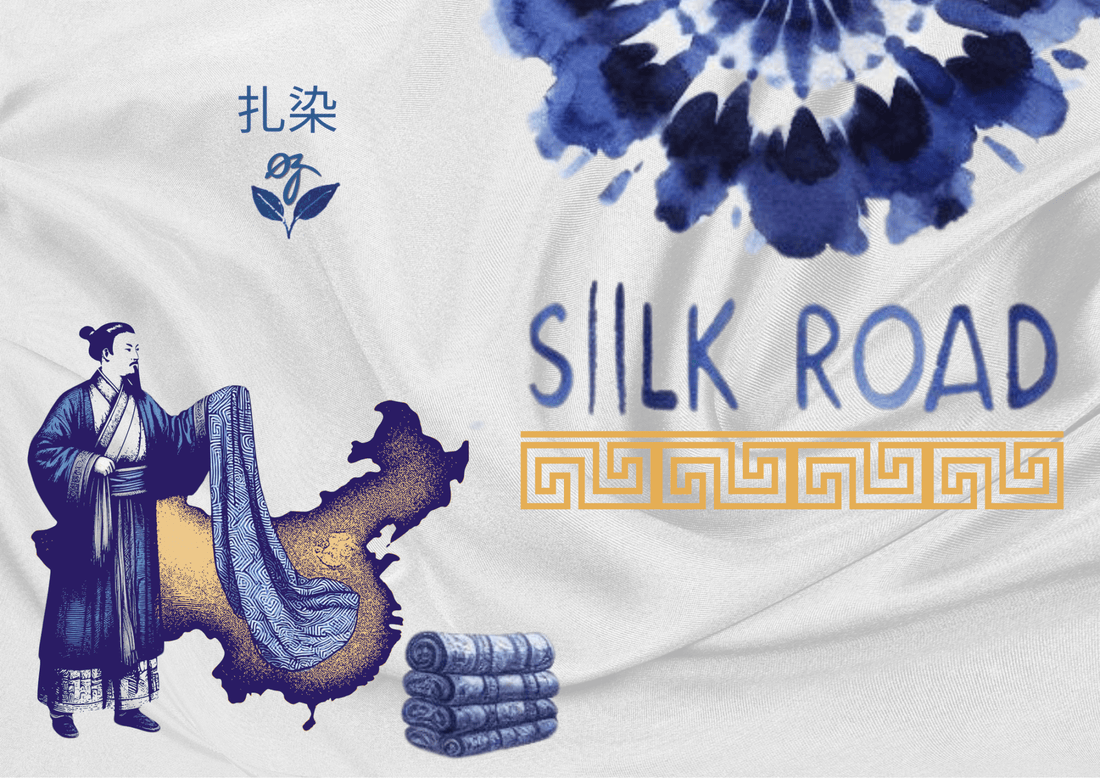
The Blue That Crossed Borders and Touched Souls: China and the Silk Road
Every colour has a story.
Every fabric carries history.
At Denimoz, we embarked on a journey to uncover the roots of blue through our Blue Voyage collection. A shade so deeply tied to denim that it has crossed oceans, deserts, and cultures to reach the clothes we wear today. Today we begin this journey through China — a key stop along the way. Now, let’s uncover the story behind this captivating colour.
Blue in China: More Than a Colour, a Symbol of Spirit and Status
In ancient China, blue was more than just a pigment; it was a symbol of harmony, prosperity, longevity, and even immortality. During the Tang Dynasty (618–907) and the Ming Dynasty (1368–1644), indigo dyeing was a highly revered craft, passed down through generations with great care. Those who held this expertise were considered as sages, and their craft was extremely valuable
Indigo was often utilised in elite clothes to denote status, as well as holy materials and regional crafts with significant spiritual importance. In the southern parts of China, there were indigo dyeing centres renowned for their competence.
Lan Yin Hua Bu (蓝印花布), or "Blue Printed Cloth," is a method that has been passed down through generations in China. This old method transforms cloth into genuine cultural amulets, imbued with identity and meaning. Hand-printed patterns, created using wooden blocks or delicately carved stencils, carry not only beauty but also protection, folk wisdom, and stories that have stood the test of time.
Today, in some parts of China, this artisanal dyeing process is still alive — especially in communities and workshops that view natural indigo dyeing as a legacy worth preserving. In Nantong, Jiangsu province, small museums and studios safeguard this cultural treasure. There, blue appears to have its own soul. Each object made with the Lan Yin Hua Bu technique is regarded a work of art, not just because of the complexities of the procedure, but also for what it signifies.

More than fashion, these fabrics are symbols of:
• Spiritual Protection: Indigo blue was thought to protect against bad spirits.
• Folk Wisdom: Patterns based on nature, longevity, and fortune were infused with ancient knowledge.
• Cultural identity is preserved via dress, house decor, and daily living.
Indigo blue in China was more than just a beautiful colour; it represented a connection to the unseen, nature, and the sacred.
The Blue Gold: Indigo's Importance on the Silk Road
Indigo-dyed textiles were highly valued and traded along the Silk Road, one of the most significant trade routes in history, for millennia. Indigo's pricing makes it a true luxury because of its symbolic worth and production complexity. Indigo was referred to as "blue gold" in various cultures; it was valuable, costly, and much sought after. One of the most honourable goods exchanged between the East and the West was its dyeing method, which took patience, talent, and time.
It was in this context that one of the most special pieces in our Blue Voyage collection was born: the Golden Indigo t-shirt.
Golden Indigo: Wear History, Carry Memory
A
t Denimoz, every piece is created with a purpose. The Golden Indigo: Women’s Long Chinese Shirt carries a design inspired by the history of the Silk Road and the indigo trade — with delicate details on the sleeves that hark back to ancient artisanal techniques.
More than just a t-shirt, it’s a reminder: the blue we wear today in denim is not just a colour — it’s culture, heritage, and living history. Wearing this piece is recognising that every thread carries a journey. Every shade of blue has a story. And every piece of clothing can be a portal to what truly matters: identity, memory, and soul.
The Silk Road and the Cultural Exchange

The Silk Road served as a conduit for cultural exchange in addition to being a route for trade. Indigo carried vast worlds in its deep blue depths, not only across boundaries. It was more than just a dye; it was a silent messenger of ideas, wafting new methods and customs into the hands of craftspeople everywhere. Stories emerged with each bolt of traded cloth; ideas were combined, skills were exchanged, and even the way people dressed started to change.
Textiles and spices coexisted with wisdom during this time period, and commerce caravans served as threads that connected East and West. The vibrant flow of cultures, patterns, and beliefs permeated history, creating a legacy that continues to influence how we design, wear, and understand fashion today.
Blue in the Modern Context
Beyond its historical and cultural significance, blue remains a powerful colour in the modern world. In contemporary fashion, indigo blue continues to symbolise serenity, confidence, and elegance. Its connection to the sky and the sea evokes a sense of calm, while its history of resilience and durability keeps blue relevant and profound. Over the centuries, blue has become more than a colour: it is a visual representation of a rich cultural heritage, and its modern use carries a link to the past, always resonating with authenticity.
The Blue That Connects Past and Present
Blue, with its rich history and symbolism, continues to be a colour that transcends time and borders. It connects the past and present, from ancient China's indigo blue to the denim we wear today. Each product at Denimoz represents a small part of that journey, paying homage to what blue has meant and continues to symbolise to civilisations all over the world. When you wear the Golden Indigo, you are not simply putting on a t-shirt. You're wearing history.


